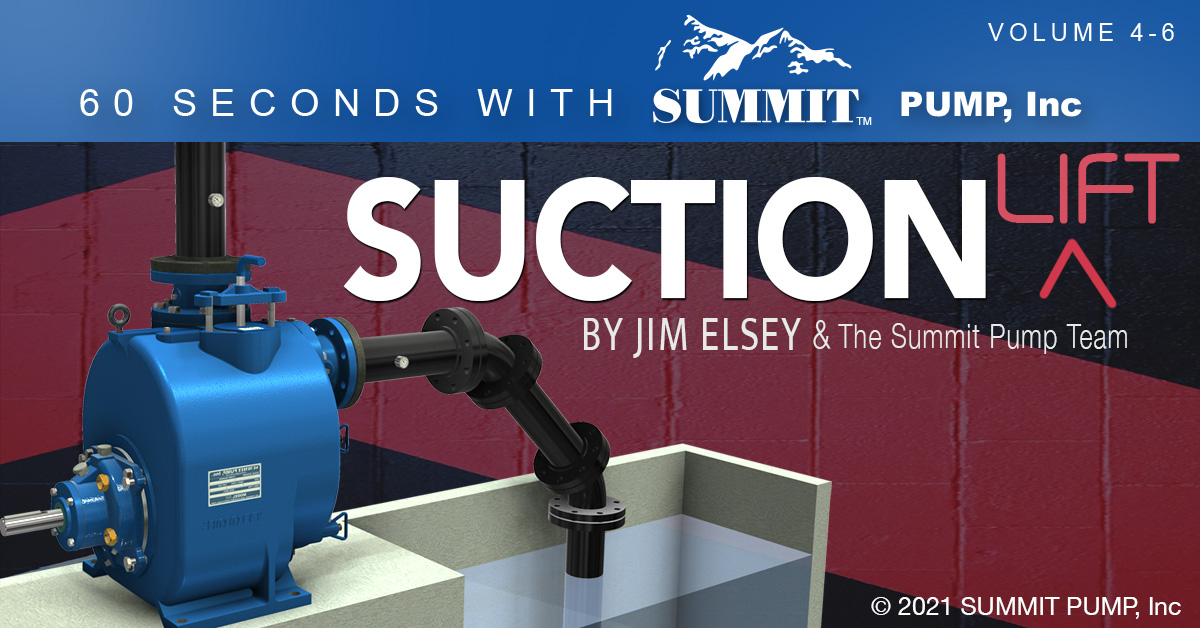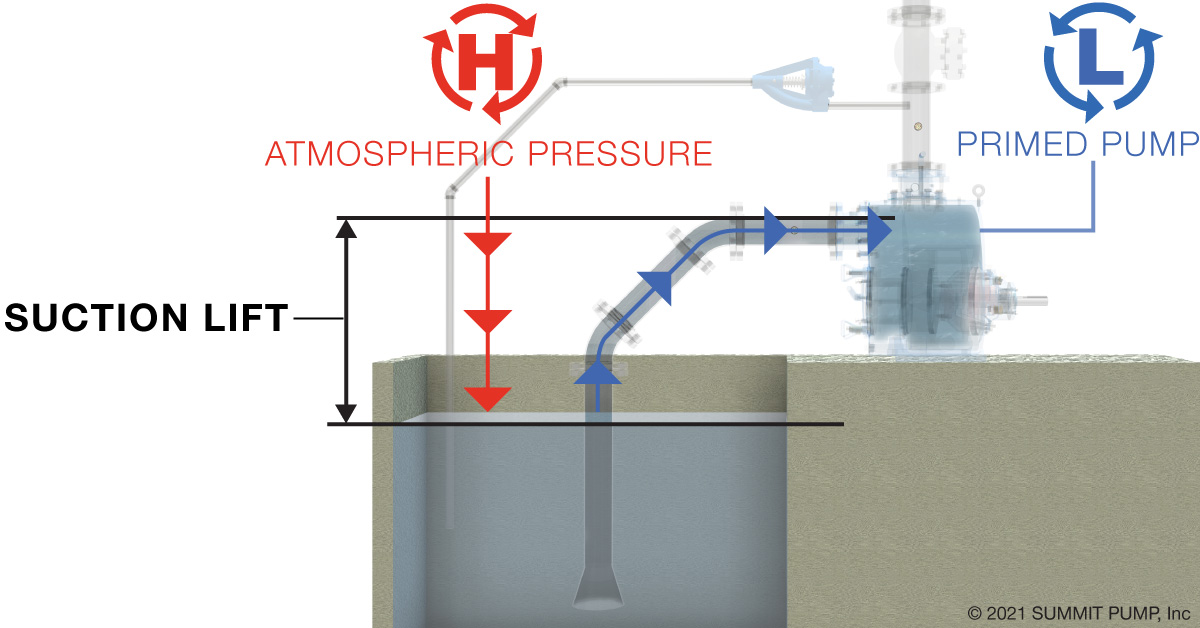Suction Lift
- July 30, 2021

Recently, we investigated numerous issues with mechanical seals failing in self-priming pumps on suction lift applications. In each instance the pump/system was not installed or operated properly. Root cause analysis suggested a misunderstanding of basic physics. We thought it would be beneficial to review a few fundamentals for pumps on suction lift installations.
A suction lift simply means the maximum level of the liquid to be pumped is physically below the centerline of the pump impeller. Most centrifugal pumps can operate with a suction lift if they are primed first. Primed means the suction line, pump casing and impeller are full of liquid and all of the air or non-condensable gases are removed.

A centrifugal pump cannot “suck” or ‘lift” the liquid into itself. Atmospheric pressure is the force pushing the liquid into the pump for open systems. From this information we can conclude; the maximum suction lift at sea level with a perfect pump, a perfect liquid and a frictionless leak free system can approach 34 feet (Atmospheric pressure at sea level is 14.7 psia X 2.31 ? 34).
NPSH Available
 |
- If you are at an elevation above sea level then the max suction lift is reduced accordingly because atmospheric pressure will decrease with elevation.
- As the temperature of the liquid increases so will the vapor pressure. As vapor pressure increases the max suction lift decreases.
- The higher the static lift the lower the NPSHA and corresponding max suction lift.
- Friction loss in the system will reduce NPSHA and the max suction lift.
Compressor vs. Pump
During the priming process the displaced air has to go somewhere. Even a great centrifugal pump is a really poor compressor due to the difference in density between air and water (? 800). If there is a check valve on the pump discharge, a parallel pump in operation and or a residual vertical liquid column, the pump will not prime. The air has to be vented somewhere, usually back to the suction source.
 |
Submergence
The critical submergence must also be calculated so the pump does not create vortices and pull air into the pump. Even a self-primer has limits for air entrainment.
Final Note
You can have sufficient NPSHA and not enough submergence …and you can also have adequate submergence and not enough NPSHA. If you are ever in doubt regarding a pump application, please contact your Regional Sales Manager and/or our engineering group for assistance. For more information see my related articles on the topic:
• Calculate NPSHa for a Suction Lift Condition
• 10 Common Self Priming Pump Issues
• Guidelines for Submergence & Air Entrainment

